
product
-

-
KN-5481 High-Temperature and High-Shear Rate Apparent Viscosity Tester (HTHS)
High-Temperature and High-Shear Rate Apparent Viscosity Tester (HTHS) covers the laboratory determination of high-temperature high-shear (HTHS) viscosity of engine oil at a temperature of 150℃ using a multicell capillary viscometer containing pressure, temperature, and timing instrumentation. The shear rate for this test method corresponds to an apparent shear rate at the wall of 1.4 million reciprocal seconds (1.4 3 106s-1).This shear rate has been found to decrease the discrepancy between thisRead
more >
-
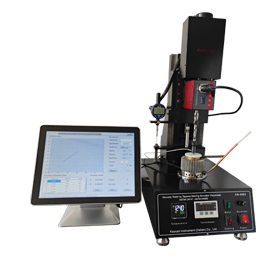
-
KN-4683 Apparatus for Viscosity by TBS
KN-4683 Apparatus for Viscosity by TBS conforms to ASTM D4683 Standard Test Method for Measuring Viscosity of New and Used Engine Oils at High Shear Rate and High Temperature by Tapered Bearing Simulator Viscometer at 150 °C and ASTM D4741 Standard Test Method for Measuring Viscosity at High Temperature and High Shear Rate by Tapered-Plug Viscometer. The ASTM D4683 covers the laboratory determination of the viscosity of engine oils at 150℃ and 1.0·106s-1 using a viscometer having a slightly tapeRead
more >
-
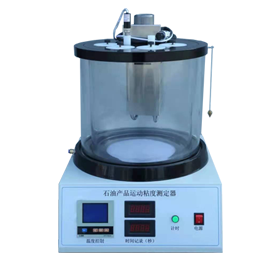
-
KN-2170 Asphalt Kinematic Viscosity Bath
the kinematic viscosity characterizes flow behavior. the method is used to determine the consistency of bitumen as one element in establishing the uniformity of shipments or sources of supply. the specifications are usually at temperature of 60 and 135℃.Read
more >
-
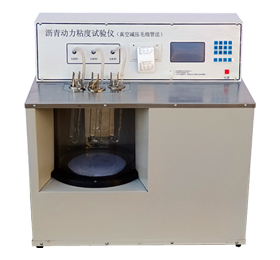
-
KN-2171 Apparatus for Viscosity of Asphalts
KN-2171 Apparatus for Viscosity of Asphalts conforms to ASTM D2171 Standard Test Method for Viscosity of Asphalts by Vacuum Capillary Viscometer. The viscosity at 60℃ characterizes flow behavior and may be used for specification requirements for cutbacks and asphalt binders. This time is measured for a fixed volume of the liquid to be drawn up through a capillary tube by means of vacuum, under closely controlled conditions of vacuum and temperature. The viscosity in Pascal-seconds is calculated Read
more >
-

-
KN-6278 Shear Stability of Polymer Containing Fluids Apparatus
This test evaluates the percent viscosity loss for polymer-containing fluids resulting from polymer degradation in the high shear nozzle device. Thermal or oxidative effects are minimized.Read
more >
-

-
KN-51350-6 Apparatus for Shear Stability of Lubricating Oils Containing Polymers
The tapered roller shearing system is a system for assessing the viscosity shear stability of a transmission lubricant. The equipment is a standard four-ball extrusion tester with a constant temperature device. Its composition consists of: embedded body, mandrel, tapered roller friction pair, tapered roller bearing, and temperature control instrument.Read
more >
-
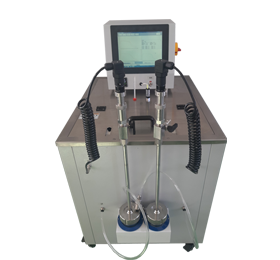
-
KN-2272 Oxidation Stability Bath, RPVOT / RBOT / TFOUT
The apparatus conforms to ASTM D2112, ASTM D2272, ASTM D4742. It determines oxidation stability of new and in-service turbine oils and other industrial oils; it utilizes an oxygen-pressured vessel to evaluate the oxidation stability of new and in-service turbine oils having the same composition (base stock and additives) in the presence of water and a copper catalyst coil at 150°C.Read
more >
-
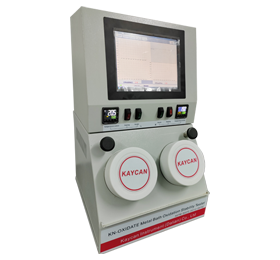
-
KN-OXIDATE Metal Bath Oxidation Stability Tester
The estimate of oxidation stability is useful in controlling the continuity of this property for batch acceptance of production lots having the same operation. It is not intended that this test method be a substitute for Test Method D943 or be used to compare the service lives of new oils of different compositions.Read
more >
-

-
KN-7525 Rapid Small Scale Oxidation Stability Tester (RSSOT)
Read
more >
-
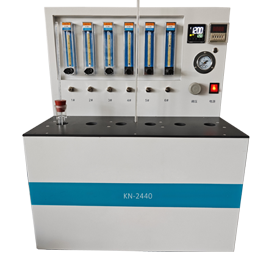
-
KN-2440 Oxidation Stability Tester for Mineral Insulating Oil
The oxidation stability test of mineral transformer oils is a method for assessing the amount of sludge and acid products formed in a transformer oil when the oil is tested under prescribed conditions. Good oxidation stability is necessary in order to maximize the service life of the oil by minimizing the formation of sludge and acid.Read
more >











